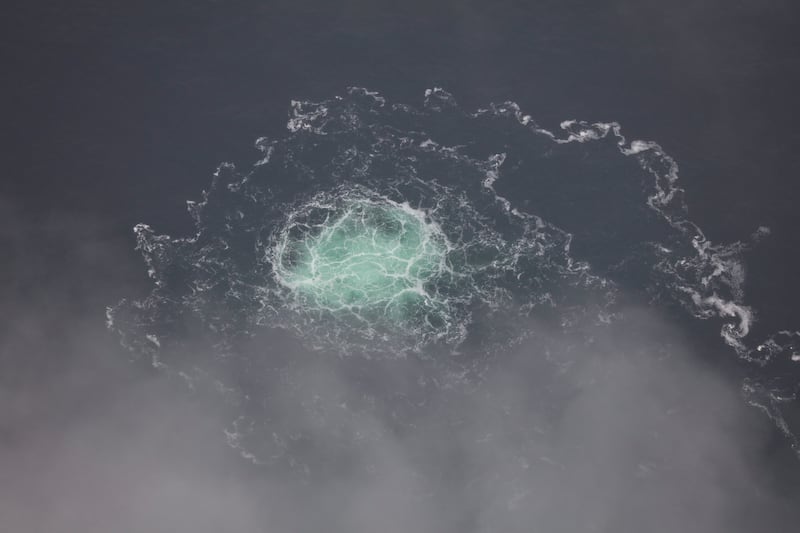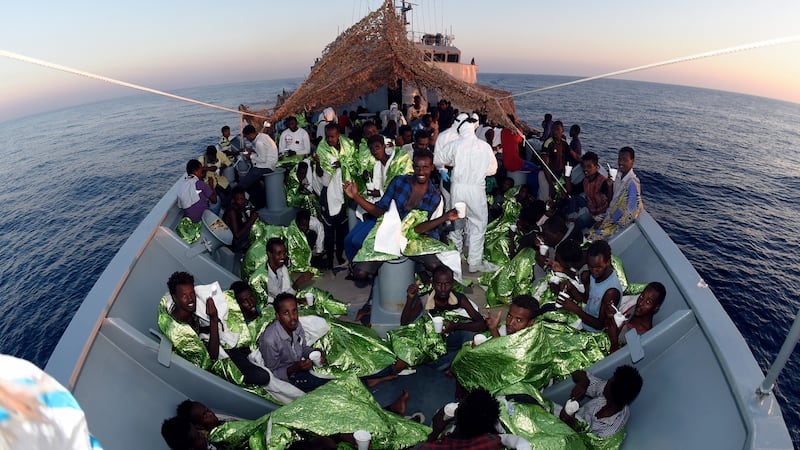For a country responsible for a maritime area 10 times its land mass, Irish people spend remarkably little time thinking about the sea. It’s a condition retired Naval captain Brian FitzGerald calls “sea-blindness”.
This means both the Irish authorities and the public often overlook the advantages and drawbacks of being the only island nation in the northern European Union, believes FitzGerald, who until recently was second in command of the Naval Service.
Examples of this sea-blindness can be found throughout history. During the Irish Famine, coastal communities starved to death because they had neither the expertise nor equipment to fish the seas. In 1916, the rebels ensured their defeat by failing to capture the pier in Dún Laoghaire to prevent the landing of British troops. In this light, it is perhaps no surprise the Irish State didn’t establish a navy until 1946, a navy which by 1969 had no ships whatsoever.
It also explains why successive Irish governments have remained blind to the many unique risks an island nation faces in the modern world. Some of those risks were driven home last week when several leaks were detected in the Nord Stream gas pipelines in the Baltic Sea. Investigations are continuing but all the signs currently point towards sabotage by Russia. If this is borne out, it will be a classic example of Russian hybrid warfare, a form of offensive action that falls below the threshold of a military attack and is designed to sow confusion and fear in the enemy.
RM Block

“We’re not an island nation, we’re an ocean state,” says FitzGerald. “We have to get people to start looking at these things from that point of view and seeing how vulnerable and how isolated we are way out here on the EU frontier.”
The visits of Russian naval vessels to Irish-controlled waters in recent years show Irish claims to military neutrality carry little weight when it comes to hybrid threats, something noted by other senior military officers.
“The policy of preserving Ireland’s autonomy and sovereignty through neutrality may not stand up well against state and non-state actors wishing to gain an advantage in an era of hybrid conflict,” Comdt Derek McGourty wrote in the Defence Forces Review in 2020.*
Recently retired Defence Forces chief of staff Mark Mellett told a conference in June the first salvo of the war in Ukraine “was actually fired on the southwest coast of Ireland” when Russian ships tested their missiles.
These exercises had originally been due to take place within Ireland’s Exclusive Economic Zone before they were moved farther out in the Atlantic following protests from the Irish Government. Russia was prepared, in Mellett’s view, to annex an area “the size of Wexford, Wicklow and Dublin” from this country for five days.
The threat doesn’t just come from Russian warships. It also comes from what are sometimes known as “little blue sailors”, named after the “little green men” who formed the first wave of Russia’s invasion of Ukraine in 2014.
Like their land counterparts, little blue sailors don’t wear their country’s military markings. They often disguise themselves as fishermen or oceanic researchers allowing their superiors to deny any culpability if they are caught engaging in hostile acts.
“Little blue sailors could be operating in Ireland’s area of responsibility without the knowledge of Irish authorities and pose a direct threat to Irish sovereignty and interests,” Naval Service Lieut Ben Crumplin wrote in the Defence Forces Review two years ago.
Ireland had first-hand experience of this type of hybrid operation in August 2021 when the Yantar, a Russian-registered oceanic survey ship dropped anchor off the Atlantic Coast, in the vicinity of subsea communications cables. In reality, the Yantar was a spy ship equipped with submersibles capable of interfering with such cables.
Both visits prompted fears that the Russian’s might be preparing to cut the cables. However, Irish security sources say this is unlikely. Major communications cables are structured in such a way that if they are cut, the data they carry is simply rerouted through another channel. Russia would have to launch a co-ordinated attack targeting many cables in many different areas, to have any major effect on Irish or EU communications.
A greater concern is that the ships were on a mission to either map the locations of the cables for a future attack or to intercept the information they carry. There is ample precedent for the latter. Documents leaked by US whistleblower Edward Snowden in 2014 show the British spy agency GCHQ was engaged in the wholesale tapping of sub-sea cables serving Ireland.
The reason there are so many sub-sea cables off our coast is the same reason they are so vulnerable to interference, says FitzGerald; Ireland’s shallow continental shelf makes it relatively easy to gain access to them.
Subsea cables are far from the only vulnerability in Ireland’s maritime domain. The single most important piece of offshore infrastructure is probably the Corrib gas fields off Co Mayo which provides some 30 per cent of Irish supplies. Gas and electricity connections between Scotland, Wales and (soon) France are another soft target.
The amount of vulnerable infrastructure around Ireland is only set to increase. There are various plans for offshore wind farms to be built around the coast as part of the Government’s commitment to increase offshore energy supplies to 7 gigawatts by 2030 and 30 gigawatts by 2050. This will require investors, FitzGerald says. “Ireland must have the ability to deliver the confidence that this is a safe place to take a risk.”
Another little-discussed threat is the transport of large amounts of nuclear waste through the Irish Sea to and from the Sellafield nuclear plant in the United Kingdom. These specially designed nuclear transport ships stay just outside Irish territorial waters, but it hardly matters. If one were attacked or involved in an accident, “it could wipe out the biodiversity in the area, potentially forever”, says FitzGerald. “We should be monitoring every single movement of these things.”
Evidence of the threat to these ships can be seen in the security measures they take, he says. “If you come across these civilian ships you will find they carry significant weapons like 20mm cannons.”
The Naval Service is responsible for shadowing these ships and, according to FitzGerald, they do a fine job. However, it is not clear how the ongoing personnel crisis is affecting its ability to carry out the task.
[ Give Me a Crash Course in... the Nord Stream leaksOpens in new window ]
Other maritime threats include the plundering of sunken wrecks, something the Naval Service is also tasked with preventing, and the impact of sonars from Nato warships and submarines on marine life. Various mass casualties of whales and dolphins around Ireland have been blamed by experts on military sonar, including one in 2018 that saw more than 70 dead beak and bottle-nosed whales wash ashore. The UK’s royal navy later admitted it had been operating submarines in their habitat.
The ability of Ireland to respond, or even detect these threats is growing weaker by the day due to the retention crisis in the Naval Service.

Operation Sophia in 2015, when ships were deployed to rescue migrants in the Mediterranean, was regarded by many sailors as a high point for the service. Since then it has seemed at times to be in a state of terminal decline and has gone from nine to five ships and from 995 members to 821 out of an establishment strength of 1,095.
Further compounding the problem is the fact one of the five remaining ships, the LÉ Roisin, has just gone into dry dock for maintenance while one of the Air Corps’s two maritime patrol aircraft is in Spain for the same reason.
The remaining ships have no subsurface capability, limited radars and are frequently unable to go to sea due to lack of crew. It’s becoming increasingly hard to hold on to trained personnel; recently an entire class of five naval electricians left for the private sector in one go.
In the late 1960s, the Naval Service was an organisation with sailors but no ships. Unless things improve quickly, it could be a one with ships but few sailors.
It’s not for a lack of proficiency. Last year the Naval Service was certified by Nato as being capable of operating in conjunction with other alliance navies, a considerable achievement. And there is some hope for the future in the form of Government commitments to buy more ships and improve pay and conditions. But for now, Ireland remains entirely unable to secure its vast, target-rich maritime waters.
* This article was amended on October 13th 2022 to correct an error
























